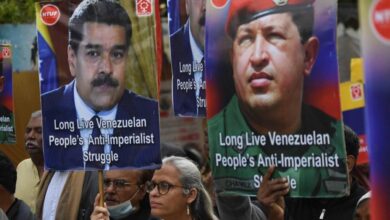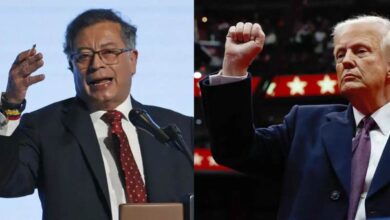Mexico: Why are students protesting?
The universities of the country close ranks against the National University to go out to manifest for the recent acts of violence
In Mexico City, on September 5 a manifest was held on the main campus of the National Autonomous University of Mexico (UNAM), the most important in the country. The reason, the acts of violence that occurred the same week: the murder of a high school student and assaults on students who were demonstrating peacefully in front of the rectory of the same university, according to Mexican media.
Leer en español: México: ¿Qué ha llevado a los estudiantes a manifestarse en las calles?
In the first case, Miranda Mendoza, an 18-year-old student, disappeared on August 20 in the east of the capital. A day later her charred body appeared. The authorities handled the event as a kidnapping, without clarifying the case so far, according to information from Animal Politico.
Later, in another of the high school campuses of the UNAM, students carried out a strike, demanding the resignation of the director and an improvement in the conditions in which they study. Given the pressure, the director presented her resignation on Thursday, August 30, which was accepted by the rector Enrique Graue, reported the newspaper Excelsior.
Maybe you're interested in reading: Mexico: The world still remembers the Ayotzinapa students
The students, still dissatisfied with the other demands included in their petition, called for a manifestation on Monday, September 3 at the rector of the UNAM, located in its University City in the Mexican capital.
According to information from El Sol de México, in the demonstration students were attacked by a group of "porros", that is to say, shock groups that may or may not have originated in the different university campuses and whose purpose is to create disturbances and violence towards protesters. Two high school students were seriously injured, while those responsible are unpunished. Even the students reported links of the aggressors with the internal surveillance of the university.
Faced with such accusations, the rector Graue was slow to issue a position, which was criticized by the students and led to organize a general strike, which led to a demonstration on September 5 to the rectory. The late response of the rector and the authorities of Mexico City was to recognize that the students were attacked by the "porros" and that they would initiate an investigation, says a communiqué from the rector of the UNAM.
The manifestation in images – Photographs by Luis Hernández Liborio for Latin American Post
Thousands of university students showed their dissatisfaction with the rector's opinion, which was joined by students from other universities. These facts are added to those of the previous year, where there were attacks on students and teachers throughout the country. Some of the most mediatic cases were those of film students killed and dissolved in acid in Jalisco or Lesby Osorio. Or the case of the student found dead in UNAM facilities and blamed by the authorities for what happened to her, according to El País de España.
What happened on September 5 is the result of a series of student disagreements towards the university authorities and toward the city authorities. On the eve of Lopez Obrador's entry IGNORE INTO the government, they demand that the conditions in which they study improve and that they have greater security in their facilities and outside of them.
The students feel little protected by the university authorities, especially in a campus (University City) that measures almost double the Vatican City. Thus, the students expected a response from the rector that would reflect their support for their demands, as did the rector Barros Sierra in the 1960s during the 1968 movement.
October 2 marks the 50th anniversary of one of the bloodiest episodes in Mexico's modern history: the massacre of students in Tlatelolco. Little was known at the time of what happened because the Mexican government used all its machinery so that the event would go unpunished. This happened 10 days after the start of the Olympic Games held in the Mexican capital. This happened in the context of the student movements of that year such as Chile, May 1968 in France or the Prague Spring in Czechoslovakia.
LatinAmerican Post | Luis Angel Hernández Liborio
Copy edited by Laura Viviana Guevara Muñoz






